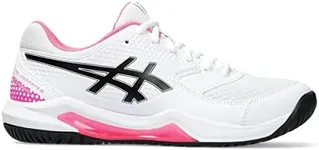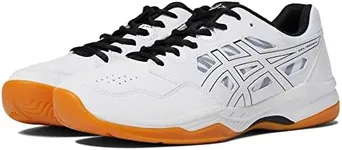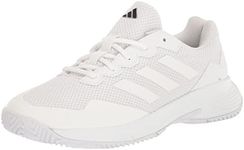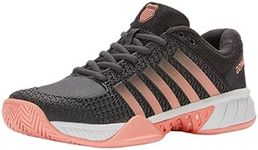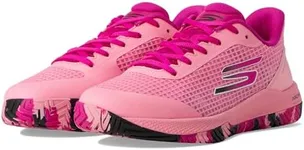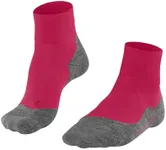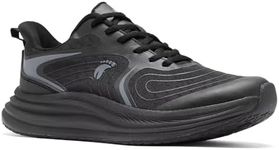Buying Guide for the Best Pickleball Shoes
Choosing the right pickleball shoes is crucial for both performance and comfort on the court. The right pair of shoes can help prevent injuries, provide the necessary support, and enhance your overall game. When selecting pickleball shoes, consider factors such as court type, playing style, and personal comfort preferences. Here are some key specifications to consider when choosing pickleball shoes and how to navigate them to find the best fit for you.Court TypePickleball can be played on different types of courts, such as indoor, outdoor, or multi-purpose courts. The type of court you play on will influence the type of shoes you need. Indoor courts typically require shoes with non-marking soles that provide good traction on smooth surfaces. Outdoor courts, on the other hand, need shoes with more durable soles that can handle rougher surfaces and provide better grip. Multi-purpose court shoes offer a balance between the two. To pick the right one for you, consider where you play most often and choose shoes designed for that specific court type.
TractionTraction refers to the shoe's ability to grip the court surface, which is essential for quick movements and stability. Shoes with good traction help prevent slipping and allow for better control during play. Traction can vary based on the sole pattern and material. Shoes with herringbone or hexagonal patterns typically offer better grip. If you play on indoor courts, look for shoes with non-marking rubber soles. For outdoor play, opt for shoes with more aggressive tread patterns. Your playing style can also guide your choice; if you make a lot of lateral movements, prioritize shoes with excellent lateral traction.
Support and StabilitySupport and stability are crucial for preventing injuries and ensuring comfort during play. This spec includes features like arch support, ankle support, and overall shoe structure. Shoes with good arch support help distribute weight evenly and reduce strain on your feet. Ankle support is important for preventing sprains, especially if you make quick directional changes. Stability features like a firm midsole and a secure fit help keep your feet steady. If you have a history of foot or ankle issues, prioritize shoes with enhanced support features. Otherwise, choose a pair that feels stable and comfortable during movement.
CushioningCushioning refers to the padding inside the shoe that absorbs impact and provides comfort. Good cushioning can reduce the stress on your feet and joints, especially during long matches. Cushioning materials can vary, with some shoes offering gel, foam, or air-based padding. Shoes with more cushioning are ideal for players who prioritize comfort and have a history of joint pain. However, too much cushioning can sometimes reduce court feel and responsiveness. If you prefer a more connected feel to the court, opt for shoes with moderate cushioning that still offer adequate comfort.
Fit and ComfortThe fit and comfort of pickleball shoes are highly personal and can significantly impact your performance. A good fit means the shoes should be snug but not too tight, with enough room for your toes to move comfortably. Consider the shoe's width, as some brands offer narrow, regular, and wide options. Comfort features like breathable materials, padded collars, and cushioned insoles can enhance your overall experience. When trying on shoes, wear the same type of socks you use for playing and walk around to ensure there are no pressure points or discomfort. Your comfort should be the guiding point here; if the shoes feel good and fit well, they are likely a good choice for you.
DurabilityDurability refers to how long the shoes will last under regular use. This is influenced by the materials used in the shoe's construction, such as the upper, midsole, and outsole. Durable shoes are made from high-quality materials that can withstand the wear and tear of frequent play. If you play pickleball regularly, investing in a durable pair of shoes can save you money in the long run. Look for shoes with reinforced areas, especially around the toe and heel, as these are common wear points. Your playing frequency and intensity can guide your choice; if you play often, prioritize durability to ensure your shoes last longer.
